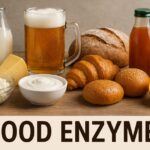Introduction
In today’s rapidly evolving leather industry, the demand for cleaner, safer, and more sustainable processing methods has never been greater. One of the most transformative innovations driving this change is the use of enzymes—biological catalysts that streamline various stages of leather processing, from soaking and dehairing to bating and degreasing. Unlike traditional chemical agents, enzymes offer a gentler, eco-friendly alternative that enhances leather quality while reducing environmental impact.
At Shrijiexbiz Pvt Ltd, we are proud to be at the forefront of this enzymatic revolution. As a nature-based enzyme manufacturer, our solutions are designed to meet the specific needs of the leather industry—ensuring high efficiency, consistent results, and improved biodegradability. By integrating our carefully developed enzyme formulations into leather processing workflows, tanneries can achieve superior leather softness, grain quality, and strength, all while minimizing pollution and water usage.
Our commitment lies in creating a more sustainable future for leather processing—one enzyme at a time.
Enzymes for Different Stages of Leather Processing
Leather manufacturing is a multi-step process, and enzymes play a crucial role at almost every stage—replacing or reducing harsh chemicals and improving the quality and sustainability of the final product. Here’s a breakdown of the main enzymatic applications in leather processing:
1. Soaking – Enzymes for Hydration and Cleaning
At Shrijiexbiz Pvt Ltd, we understand that the foundation of high-quality leather begins with effective soaking. Our Soaking Enzyme is specially formulated to rehydrate hides and skins while efficiently removing dirt, blood, soluble proteins, and fats. This critical first stage ensures optimal preparation for downstream processes like liming and bating.
Our dedicated research and development team plays a pivotal role in designing enzyme solutions that perform consistently across a wide range of hide conditions and water qualities. Through continuous testing, field trials, and customer feedback, we’ve developed a soaking enzyme that not only shortens soaking time but also reduces water consumption and microbial load. The result is cleaner, more supple hides, ready for the next phase of eco-friendly leather processing.
At Shrijiexbiz, our mission is to deliver nature-based innovations that empower tanneries to process leather with greater efficiency, sustainability, and care.
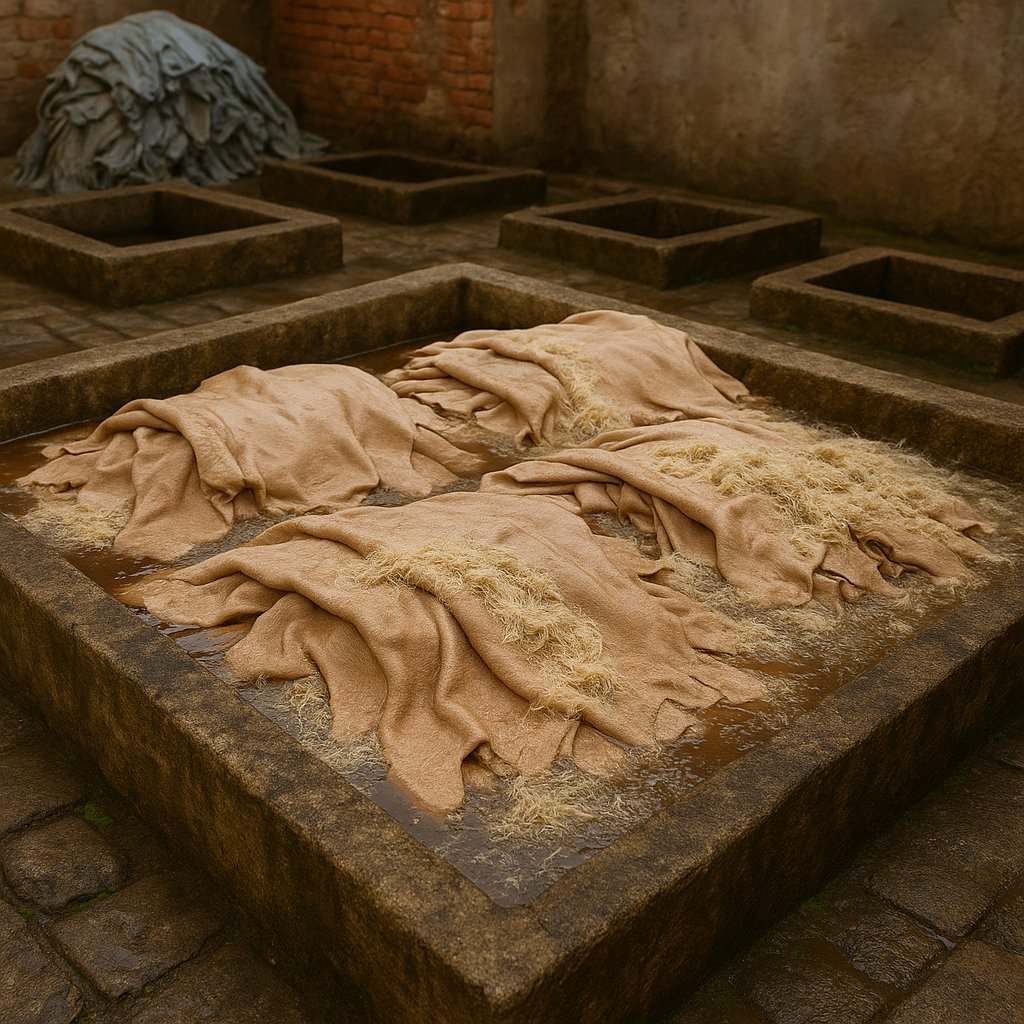
Enzyme Type: Proteases & Lipases
Function: Removes blood, dirt, soluble proteins, and fats from raw hides and skins.
Benefits:
- Enhances water absorption
- Prepares hides for uniform processing
- Reduces odor and microbial load
2. Liming/Unhairing – Enzymes for Gentle Hair Removal
The traditional liming and unhairing process relies heavily on harsh chemicals like lime and sodium sulfide, which create toxic effluents and damage the environment. At Shrijiexbiz Pvt Ltd, we offer an advanced Liming/Unhairing Enzyme solution that reduces the need for these pollutants while delivering superior results. Our enzyme-based approach gently breaks down keratin and other epidermal proteins, allowing for effective hair removal with minimal grain damage.
Behind this innovation is our experienced research and development team, which continuously works on optimizing enzyme activity for diverse hide types and operating conditions. By collaborating with tanneries and conducting real-time trials, our scientists ensure each formulation meets practical demands—achieving cleaner pelts, reduced sludge formation, and lower chemical load.
With Shrijiexbiz, tanneries can adopt a greener, safer, and more cost-effective unhairing process without compromising on leather quality.
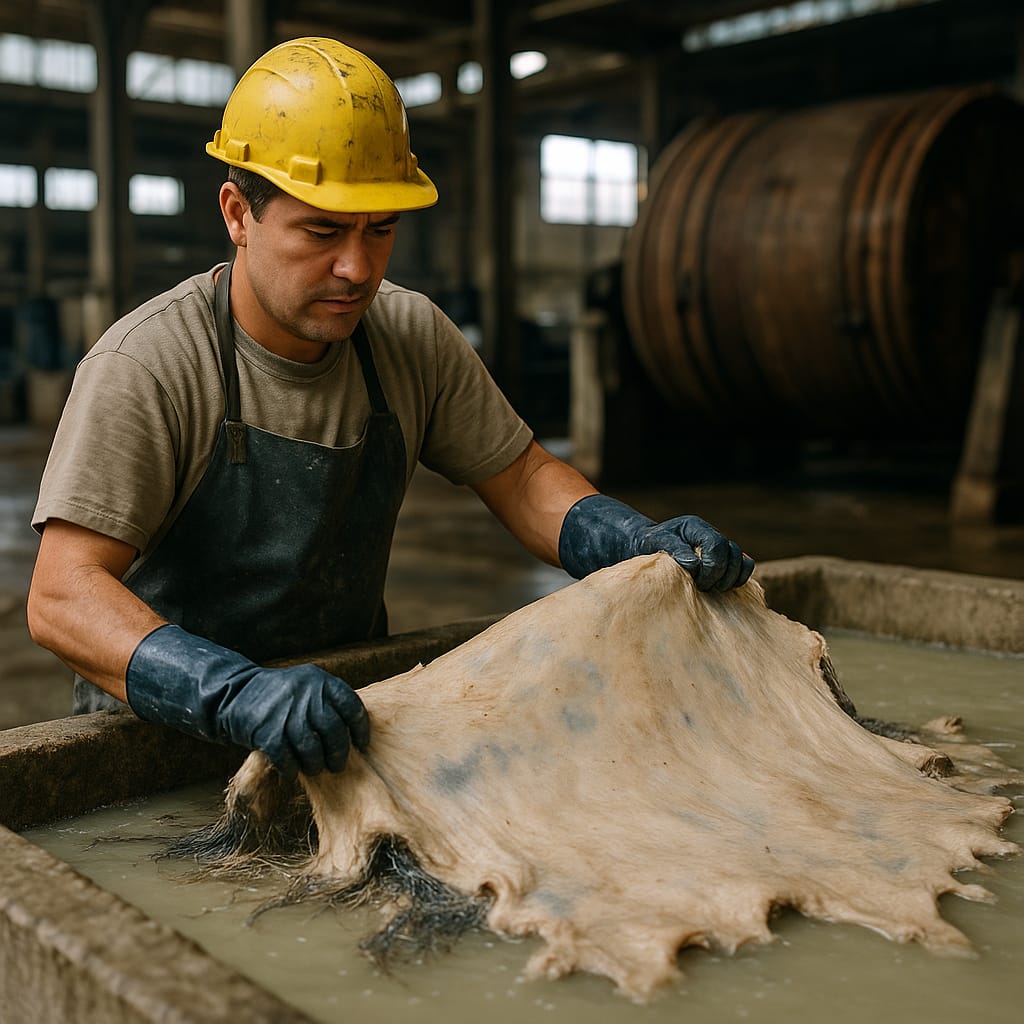
Enzyme Type: Proteases (Keratinases)
Function: Aids in breaking down hair roots and epidermal proteins.
Benefits:
- Reduces the need for lime and sulfide
- Minimizes sludge formation and toxic waste
- Results in cleaner pelts with a smooth surface
3. Bating – Enzymes for Softening and Cleaning Grain
Bating is a crucial stage in leather processing where the hide is softened and its grain cleaned for improved texture and appearance. At Shrijiexbiz Pvt Ltd, our specialized Bating Enzymes are designed to selectively break down non-structural proteins, helping to open up the fiber structure without compromising the strength of the leather. This results in smoother, more supple hides with excellent grain clarity and dye penetration.
Our research and development team plays a central role in fine-tuning these enzymes for performance across various leather types and tanning methods. Through in-depth lab analysis and field validation, our scientists ensure that the enzyme activity is precisely balanced—strong enough to clean and soften, yet gentle enough to preserve the hide’s integrity.
By integrating Shrijiexbiz bating enzymes into their process, tanneries can achieve consistently high leather quality, reduce process time, and minimize environmental footprint.
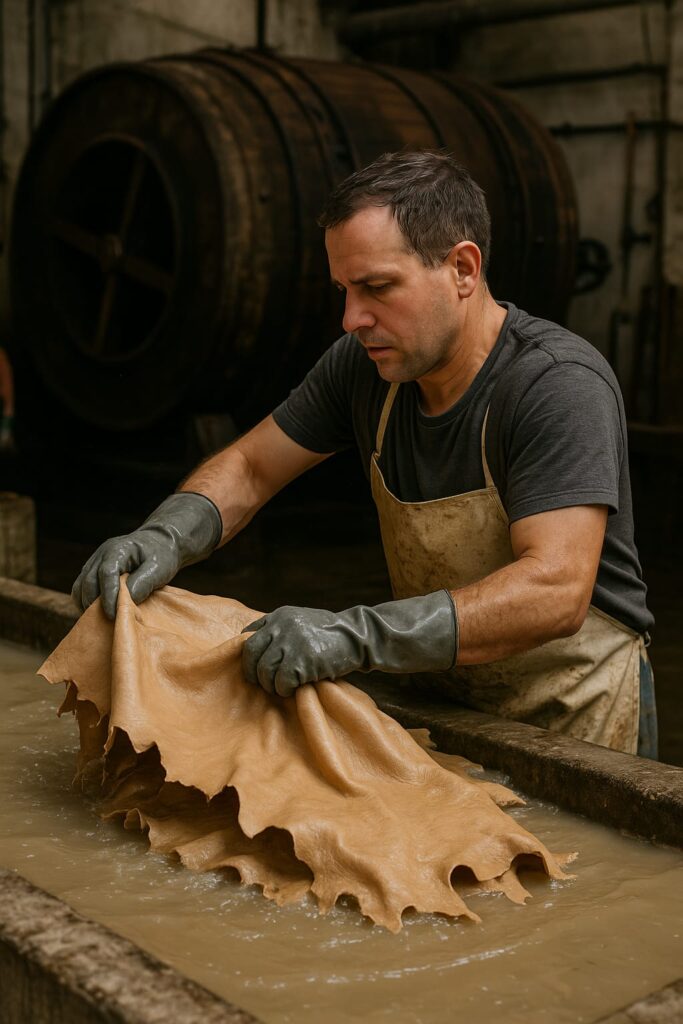
Enzyme Type: Mild Proteases
Function: Removes unwanted proteins and opens up the fiber structure.
Benefits:
- Improves softness and elasticity
- Enhances dye penetration
- Provides a cleaner, finer grain appearance
4. Degreasing – Enzymes for Fat Removal
Degreasing is essential to remove natural fats and oils from hides, especially in fatty skins like goat, sheep, and pig. Traditional solvent-based methods can be harsh and environmentally damaging. At Shrijiexbiz Pvt Ltd, we offer an eco-friendly alternative with our Degreasing Enzymes, formulated to break down and emulsify fats effectively without harming the hide structure. This ensures a cleaner, more uniform substrate, critical for even tanning and finishing.
Our research and development team has engineered these enzyme formulations to perform efficiently under varying pH and temperature conditions, making them suitable for diverse tannery operations. By conducting rigorous lab testing and on-site trials, our scientists fine-tune enzyme strength and compatibility to maximize fat removal while maintaining leather softness and grain quality.
With Shrijiexbiz degreasing solutions, tanneries benefit from improved leather consistency, reduced chemical usage, and lower effluent load—supporting both quality and sustainability.
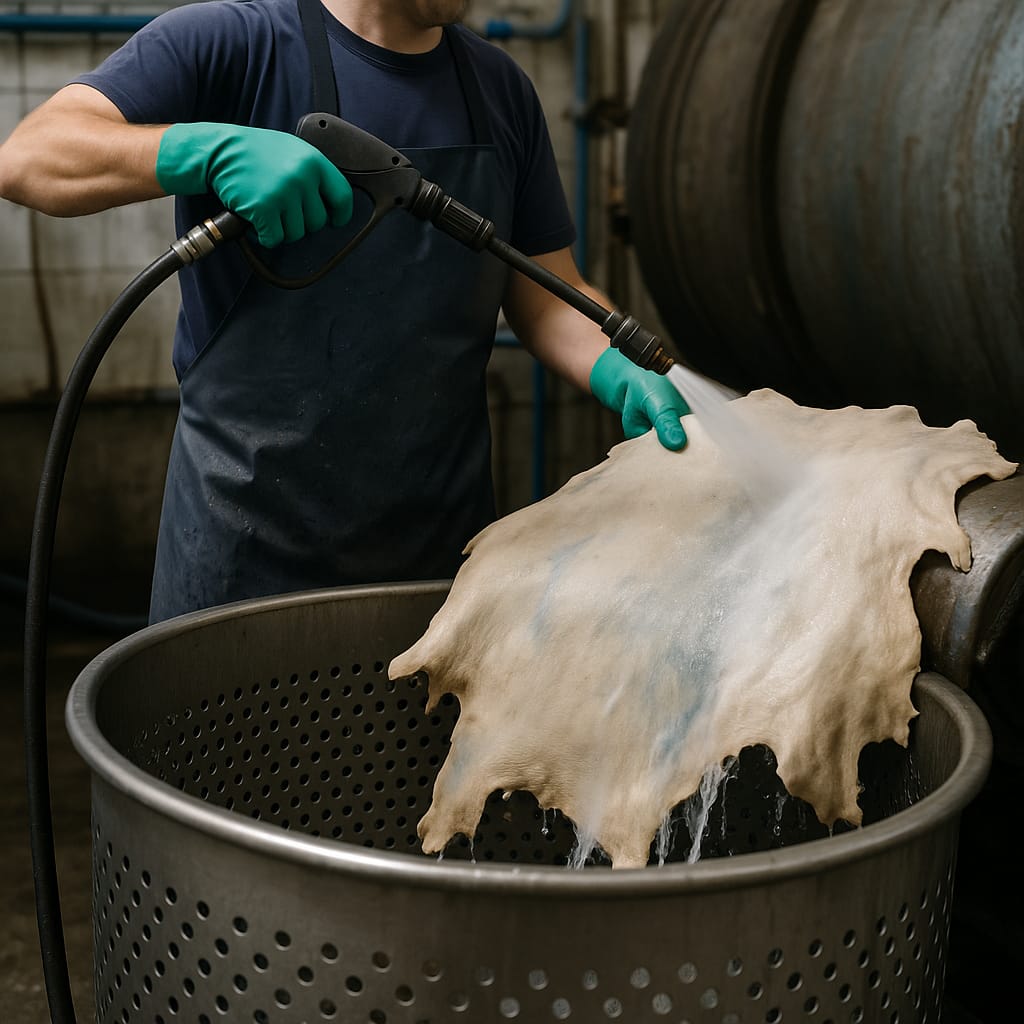
Enzyme Type: Lipases
Function: Breaks down natural fats and oils embedded in hides.
Benefits:
- Prevents grease spots in the final leather
- Reduces the need for harsh solvents
- Improves uniformity in tanning
5. Pickling and Tanning – Supportive Enzyme Action
While pickling and tanning are traditionally dominated by chemical processes, enzyme technology is increasingly being used to support and enhance their efficiency. At Shrijiexbiz Pvt Ltd, our specially developed acid-stable enzymes assist in breaking down residual proteins during pickling, allowing better penetration of tanning agents such as chrome or vegetable tannins. This leads to more uniform tanning, reduced chemical load, and improved leather softness and strength.
Our research and development team works relentlessly to formulate enzymes that remain active and stable even under acidic conditions typically found during pickling. Through detailed biochemical analysis and close collaboration with industry partners, our scientists fine-tune these enzymes to suit different leather types and tanning methods. The result is a refined, cleaner process that increases tanning efficiency while reducing environmental impact.
With Shrijiexbiz’s enzyme support during pickling and tanning, tanneries can achieve higher quality leather with greater consistency and sustainability.
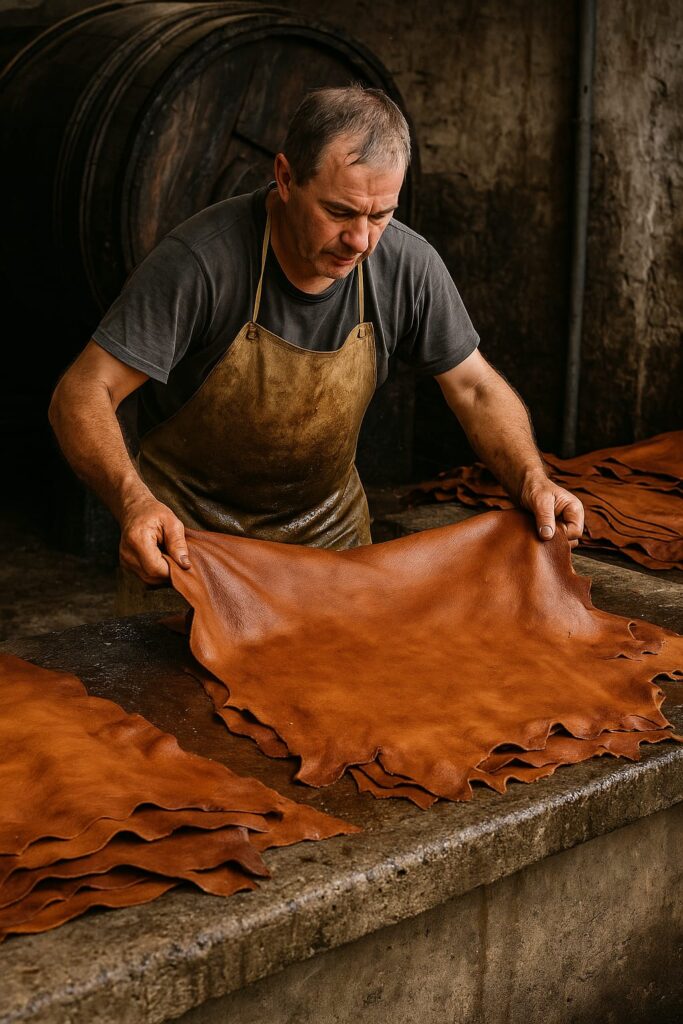
Enzyme Type: Acid-stable Proteases (in some cases)
Function: Prepares hides for even chrome or vegetable tanning.
Benefits:
- Enhances tanning agent penetration
- Reduces the amount of tanning chemicals required
Shrijiexbiz Pvt Ltd: Custom Enzyme Solutions for Leather
At Shrijiexbiz, we offer a tailored range of enzyme formulations for every stage of leather processing. Our R&D team works closely with tanneries to develop high-performance enzyme blends that match specific leather types and desired results—whether it’s for soft goat leather, sturdy bovine hides, or chrome-free tanning processes.
By integrating our enzyme technology, leather processors can enjoy improved yield, better leather quality, and significantly lower environmental impact.

